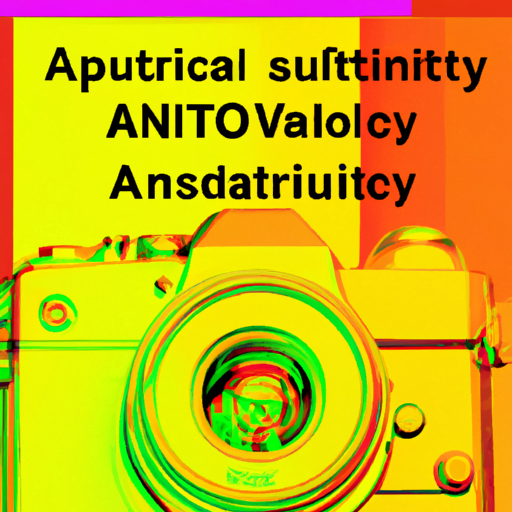
-
Table of Contents
- Sustainability in Design: AI’s Contribution to Eco-Friendly Graphics
- The Environmental Impact of Traditional Graphic Design
- The Role of AI in Eco-Friendly Graphics
- 1. Virtual Design and Visualization
- 2. Efficient Resource Management
- 3. Smart Color and Material Selection
- 4. Automated Design Optimization
- Case Studies: AI’s Impact on Eco-Friendly Graphics
- The Future of AI in Graphic Design
- Conclusion
Sustainability in Design: AI’s Contribution to Eco-Friendly Graphics

In recent years, sustainability has become a pressing concern across various industries. As the world grapples with the effects of climate change and environmental degradation, businesses are increasingly seeking ways to reduce their ecological footprint. One area where sustainability is gaining traction is in design, particularly in the realm of graphics. With the advent of artificial intelligence (AI), designers now have a powerful tool at their disposal to create eco-friendly graphics that not only captivate audiences but also minimize environmental impact. This article explores the role of AI in promoting sustainability in design and highlights its potential to revolutionize the field of graphic design.
The Environmental Impact of Traditional Graphic Design
Before delving into the ways AI can contribute to eco-friendly graphics, it is essential to understand the environmental impact of traditional graphic design practices. Traditional graphic design often involves the use of materials and processes that are harmful to the environment. Some of the key contributors to environmental degradation in graphic design include:
- Printing: Traditional graphic design relies heavily on printing, which consumes significant amounts of paper and ink. The production of paper contributes to deforestation, while the manufacturing and disposal of ink cartridges release harmful chemicals into the environment.
- Waste: Graphic design projects often generate a substantial amount of waste, including discarded drafts, unused materials, and packaging. This waste ends up in landfills, contributing to pollution and greenhouse gas emissions.
- Energy Consumption: Graphic design studios and printing facilities consume vast amounts of energy to power their equipment, resulting in increased carbon emissions and reliance on non-renewable energy sources.
These environmental challenges highlight the need for sustainable alternatives in the field of graphic design. This is where AI comes into play.
The Role of AI in Eco-Friendly Graphics
Artificial intelligence offers a range of innovative solutions that can significantly reduce the environmental impact of graphic design. By leveraging AI technologies, designers can create sustainable graphics that are visually appealing, cost-effective, and environmentally friendly. Here are some ways in which AI contributes to eco-friendly graphics:
1. Virtual Design and Visualization
AI-powered design tools enable designers to create virtual prototypes and visualizations, reducing the need for physical materials and wasteful iterations. By using virtual design and visualization, designers can experiment with different concepts, colors, and layouts without the need for printing or physical production. This not only saves resources but also minimizes waste and reduces carbon emissions associated with traditional design processes.
2. Efficient Resource Management
AI algorithms can analyze data and optimize resource allocation in graphic design projects. By considering factors such as material usage, energy consumption, and waste generation, AI can suggest more sustainable alternatives. For example, AI can recommend using recycled or eco-friendly materials, reducing the overall environmental impact of the design process. Additionally, AI can help designers minimize energy consumption by optimizing equipment usage and scheduling.
3. Smart Color and Material Selection
AI can assist designers in making informed decisions regarding color and material selection. By analyzing data on the environmental impact of different materials and pigments, AI algorithms can recommend eco-friendly options. For instance, AI can suggest using natural dyes instead of synthetic ones, which often contain harmful chemicals. By making sustainable choices, designers can create graphics that are not only visually appealing but also environmentally responsible.
4. Automated Design Optimization
AI-powered design optimization tools can automatically analyze and improve graphic designs to make them more sustainable. These tools can identify areas where designs can be optimized for reduced material usage, improved energy efficiency, and minimized waste generation. By automating the optimization process, designers can save time and resources while ensuring that their designs align with sustainability goals.
Case Studies: AI’s Impact on Eco-Friendly Graphics
Several real-world examples demonstrate the positive impact of AI on eco-friendly graphics. One notable case is the collaboration between Adobe and Stanford University, where researchers developed an AI-powered tool called “DesignGraphs.” This tool analyzes design layouts and suggests alternative arrangements that reduce ink usage while maintaining visual appeal. By optimizing ink consumption, DesignGraphs helps designers create more sustainable graphics without compromising on quality.
Another example is the work of the design agency Ideo. They developed an AI-driven platform called “Font Map” that helps designers select fonts based on their environmental impact. By analyzing the carbon footprint associated with different fonts, Font Map enables designers to make conscious choices that align with sustainability objectives.
The Future of AI in Graphic Design
The potential of AI in promoting sustainability in graphic design is vast and continues to evolve. As AI technologies advance, designers can expect even more sophisticated tools and solutions that further reduce the environmental impact of their work. Some future possibilities include:
- AI-powered predictive analytics that can forecast the environmental impact of design choices, allowing designers to make informed decisions from the outset.
- Integration of AI with 3D printing technologies, enabling designers to create physical prototypes with minimal waste and energy consumption.
- AI algorithms that can analyze user feedback and preferences to create personalized designs that minimize resource usage and waste.
These advancements hold great promise for the future of sustainable graphic design, where AI will play a pivotal role in creating visually stunning and environmentally responsible graphics.
Conclusion
AI’s contribution to eco-friendly graphics is transforming the field of graphic design. By leveraging AI technologies, designers can create sustainable graphics that minimize waste, reduce energy consumption, and make conscious material choices. The examples and case studies discussed in this article demonstrate the positive impact of AI on sustainability in graphic design. As AI continues to advance, designers can look forward to even more innovative tools and solutions that further enhance the eco-friendliness of their work. By embracing AI, the design industry can lead the way in creating a more sustainable future.
